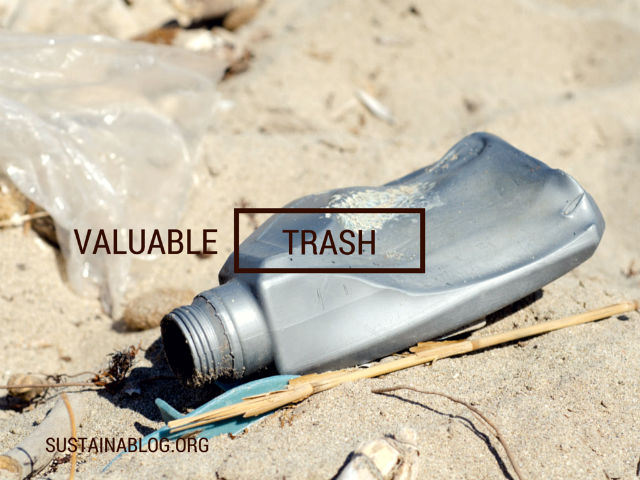
One of the ideas that pushed me towards a focus on waste issues was that power of the word “waste” itself: when we attach it to an item – or a class of items or materials – we render it valueless. But as we’ve seen time and time again, just a little innovative thinking can (re)discover the value in that material.
That’s especially important for plastic waste, which we’re literally swimming in at this point: this “waste” isn’t just providing an eyesore, but draining the value from other resources in marine ecosystems.
Social enterprise The Plastic Bank launched with a mission to not only “revalue” plastic that ends up in our oceans, but to do so in a manner that provides economic opportunity to some of the world’s poorest people. As we’ve seen before, poverty and ocean plastic often end up in the same places; creating value for that plastic creates a resource for people who desperately need one. The Plastic Bank refers to this process as “turning waste plastic into currency,” and the resulting recycled material as “Social Plastic.”
So far, the young company’s had success in terms of selling its product: LUSH Cosmetics purchased Social Plastic pellets to manufacture their Sea Spray bottles; other companies are also showing interest.
But founders David Katz and Shaun Frankson want to put as much of the whole process as possible into the hands of the people its designed to serve. Their first innovation on this front: an open-source extruder that makes #D printing filament from waste plastic.
Take a look:
Now, one commenter on this video already claimed that people in the developing world really have little need for 3D printing. He’s right – but that’s not the idea here. Rather, the Extruder gives people the technology to turn “waste” into a commodity – filament – that they can sell. Using the open source model insures that the technology can work more efficiently for the needs of those people, as engineers with knowledge of developing world limitations can adjust the design.
On top of the technology, the Plastic Bank is also in the process of setting up collection centers for plastic waste. Next week, it will open its first one in Lima, Peru (with many more to come, they claim).
At least part of the idea here is to foster behavior that already exist: the poor in Latin America already make some income from recycling materials like metals, glass, and paper. Katz and Frankson want to harness that behavior to enhance the economic opportunities for recycling, and to work to address at least some of the ocean plastic problem.
Pretty cool, huh? We’re just loving these little companies developing technology to make use of plastic waste, so if you know of others, tell us about them!
Flexible plastic packaging players such as Uflex Ltd., by nature is highly adaptable. The clever and solution driven designs that the packaging companies in India are coming up with, further drives the sustainability benefit of the products which they clothe.
ReplyDelete